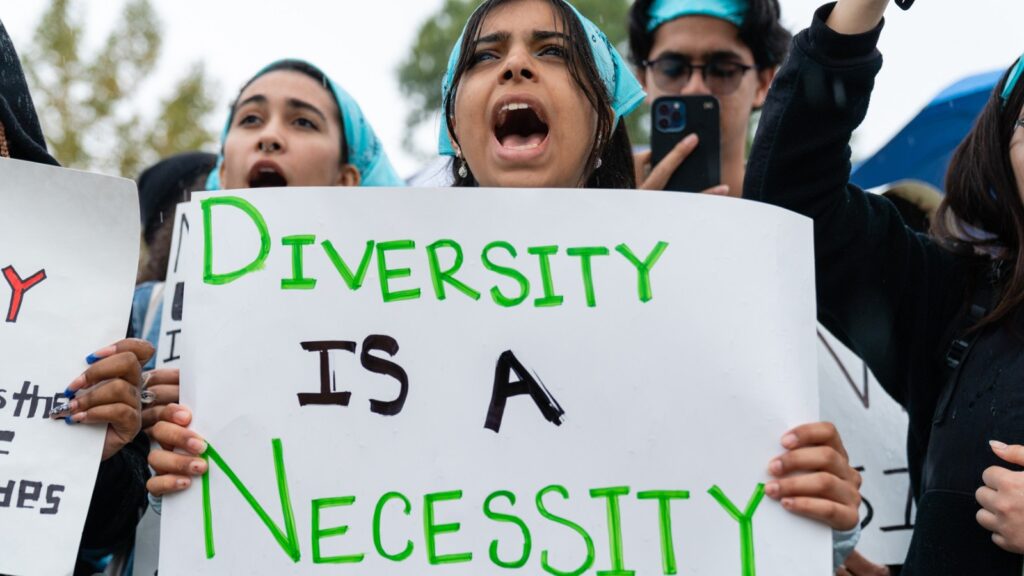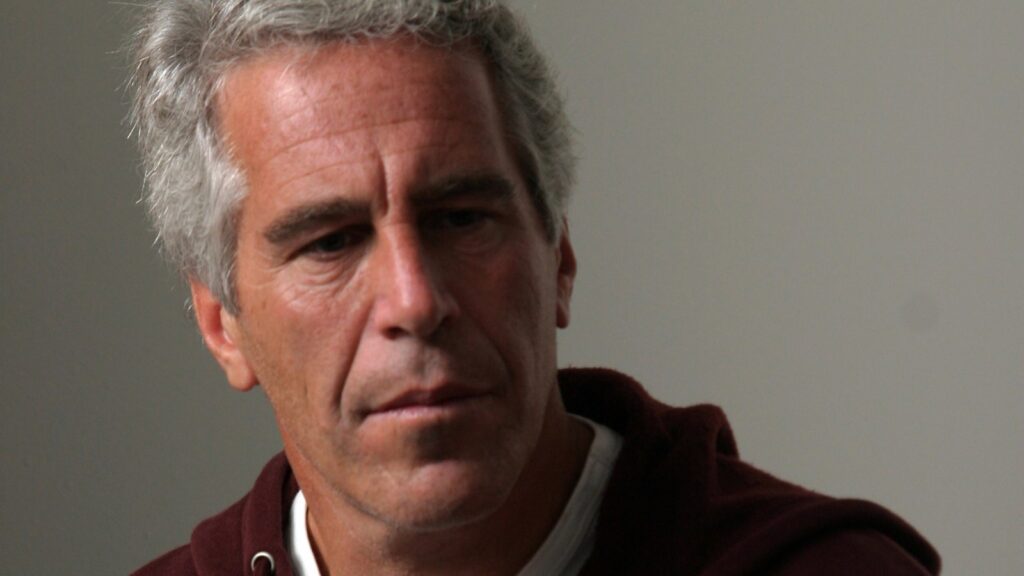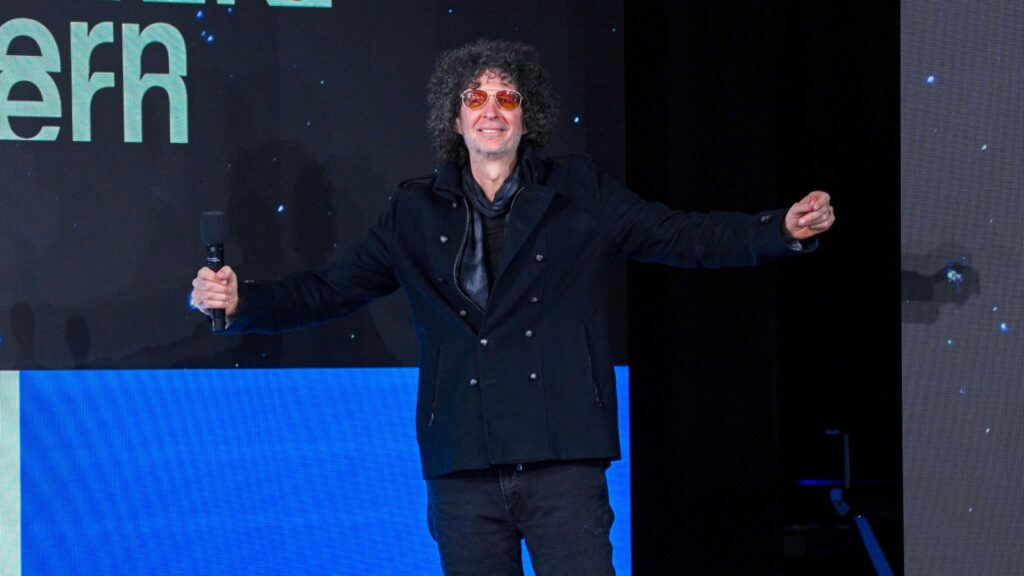‘A Scary Future for Them’: Elon and Pals Turned DEI into Far Right’s New Boogeyman
Not even two weeks into the new year, and it looks as though far-right agitators have honed in on the scapegoat of the season: DEI, shorthand for “diversity, equity and inclusion” initiatives and policies that can be implemented in workplaces and educational institutions.
Although long included in the litany of vilified concepts that conservatives like to complain about — from “wokeness” to gender fluidity to Critical Race Theory — DEI has taken a new place of prominence after being scapegoated for two incidents that made headlines in early 2024. One was the ouster of Harvard University president Claudine Gay, the first Black person to lead the Ivy League school, just six months after she assumed the role. The other was an Alaska Airlines flight during which a door plug of the Boeing 737 Max 9 jet blew off the fuselage, causing cabin depressurization and necessitating an emergency landing.
Originally, neither story had any to do with DEI. The initial calls for Gay’s resignation stemmed from her perceived failure to address antisemitism on the Harvard campus. It was only after she faced the allegations of plagiarism that would ultimately unseat her that prominent critics, including hedge fund billionaire Bill Ackman and right-wing activist Christopher Rufo (who first accused her of academic misconduct), argued that she was unqualified for the job of president and had been appointed solely because of her race and gender. As for the malfunctioning door plug on the Boeing, it was manufactured by Spirit AeroSystems, a company already facing a lawsuit over “quality failures” of its parts. Yet Elon Musk, now closely aligned with the reactionary right, implied in a tweet that “DEI hiring” at Boeing was to blame, and Chaya Raichik, known on X/Twitter for her anti-LGBTQ hate account “Libs of TikTok,” fumed that Alaska Airlines was jeopardizing passenger safety by focusing on diversity and inclusion and “making their planes gay.”
This moral panic, DEI consultants tell Rolling Stone, mirrors the unfounded paranoia in recent years about Critical Race Theory, or CRT, being taught to young students. CRT involves advanced academic concepts introduced at the undergraduate or graduate level; K-12 schoolteachers have been largely baffled at the objections from parents to something that wasn’t even part of their curriculum. The conflict was cynically invented, in part, by Rufo. The backlash to DEI, experts say, can likewise be described as outrage at societal changes that are not actually occurring at significant levels.
“What’s really absurd about these attacks,” says Amber Madison, who co-founded the DEI consulting firm Peoplism in 2017, is that “when you actually look at statistics, we are making horrible progress.” She adds, “No, women and people of color and people who are underrepresented are maybe marginally better off than 10 years ago, but numbers are not moving and they’re not moving fast enough.” Madison also says that business owners and executives who claim to be “passionate” about implementing DEI practices can balk at her systematic approach and instead ask for a “one-off” training session that is far less effective.
Matthew Florence, a DEI consultant who has mostly worked with nonprofits, including education, housing, and arts groups, agrees that the supposed crisis is vastly overblown — not only because DEI doesn’t have the negative effects described by conservatives, but because it’s far less institutionalized than its critics imagine. “All of the promises of promotion of DEI after the big police cases, particularly [the killing of] George Floyd [by police officer Derek Chauvin], are starting to drop off,” Florence says. “The nonprofit sector definitely wants to continue the trend, but the money is not always there to follow through. And the urgency has gone.”
“It’s definitely ironic that they would step up the attacks when things are simmering down,” Florence adds. But he suspects that DEI “is a bigger boogeyman than CRT,” which is “a harder concept to understand.” Florence also says that “the newer attacks on DEI seem, to me, to be more in line with attacks on diversity in general, from the attacks on diversity in college admissions to the attacks on university presidents to the general whining about white men, in particular, not being hired, to the attacks around immigration. It feels like an overall last-ditch effort to preserve a more white-centered United States culture.”
Rachel Décoste, a writer, educator, and social policy expert from Ottawa, Canada, who leads workshops and lectures on topics including anti-racism and diversity, agrees that scare tactics around DEI are more broadly effective than anti-CRT propaganda. “I think that’s their strategy,” she says. “They were losing a lot of people with CRT. If you ask Joe Blow on the street, ‘What does it mean?’ — they usually weren’t able to define it. DEI is widespread, it’s the subtitle of somebody at your workplace, and it’s an easier, closer target.”
But Décoste also notes that the anti-DEI surge is really just an echo of the grievances voiced about similar attempts to foster social equality in the past. More than 15 years ago she spoke at conferences about “diversity” — “that was the term back then,” she explains. “I’m sure you could go back to the ’70s, and they had discourse about, I suppose the word in Canada was ‘multiculturalism.’” She cites the U.S. Equal Employment Opportunity Commission and affirmative action as well. “All of these things, to me, mean the same thing,” Décoste says: people wanting “the same consideration, the same respect,” no matter how you label the project. And in each case, Décoste points out, there has been stubborn resistance.
The opponents, Décoste says, are generally afraid of what they perceive as a loss of influence or status. “I’m not a psychologist, but I will tell you what I’ve read about the topic is that they tend to be very fearful, xenophobic,” she says. “And they liked the way things were when you could say whatever you want, and offend whoever, and face zero consequences. They see the power that they had inherited reduce and shrink, and only getting worse as the demographics are changing.” Alluding to the mid-2040s estimate of when non-Hispanic white people are projected to account for less than 50 percent of the U.S. population, she adds, “It’s a scary future for them. That’s so sad.”
Madison, too, says that people get “freaked out” when they fall for the line that DEI is about “taking down the straight white guy rather than leveling the playing field.” Working in sales, she encounters all kinds of misconceptions in this vein. “I can’t tell you how many times I’ll be talking to a CEO who’s worried that working with a DEI firm means we’ll ‘make them’ set quotas, or become prolific LinkedIn commentators on issues of social justice, or abandon their organization’s core mission in the pursuit of DEI greatness,” she says. “I always tell them: ‘Listen, what we do is actually quite vanilla. We want to make sure your hiring process more accurately identifies who is the best fit for the role. We want to make sure your performance management system is actually evaluating someone’s performance. And we want to teach managers methods to assign work more fairly, give higher quality feedback, and ensure they’re not systematically ignoring members of their teams.” The result, she explains, is that “workplaces are more fair for everyone, not just people who are historically marginalized.”
“It’s rich that Elon Musk would post that diversity efforts make travel less safe given that self-driving cars have been found to be less likely to detect pedestrians with dark skin, and women are more likely to be injured in car crashes because car safety mechanisms were historically built with male bodies as the norm,” Madison says. “One might imagine that if the teams building cars, self-driving or otherwise, were more diverse, or at least thinking with a DEI mindset — this needs to work for all people — travel would actually be safer.”
Of course, Musk’s claim that DEI makes transportation less safe may be somewhat disingenuous to begin with, and possibly a screen for other sociological concerns he has frequently expressed. Musk often frets about declining birth rates (particularly in Western countries) and recently all but endorsed the Great Replacement conspiracy theory — the claim that nefarious forces are facilitating massive immigration of non-whites in order to speed the demographic decline of whites, which has inspired racist mass shooters.
Florence, for one, draws a connection between such ideology and the DEI scare, mentioning the wave of “legal actions around abortion,” most notably the overturning of Roe v. Wade in 2022. Movements like the Christian “Quiverfull” theology, he says, aim “to get mostly white folks to have larger families to ensure they are not replaced in the majority.” He continues, “They see how many immigrant and minority families tend to be larger, and that scares them. Change is so hard for so many, in general, and i feel like this whole thing is a reaction to change — and the accompanying fear.”
Even a more symbolic shift can lead to spasms of outrage and violence. Décoste recalls how arsonists targeted a Black church after Barack Obama was elected as the first Black president of the U.S. in 2008. “This is a recurring phenomenon,” she says, “whenever there’s perceived progress for minorities, especially the ones that are visible, and it’s happening again. But it doesn’t change the general trajectory is that are more and more of us. And we’ll be kinder to [the new] racial minorities than they were with us.”
In the meantime, DEI consultants and educators will have to try to move the needle while combatting misinformation about what they do. “Business leaders are reacting to what they read about DEI,” says Madison. “And if they’re reading all these horrible things about DEI, that needs to be countered with some very real explanations of what DEI work actually is.” She says that Peoplism’s strategies are “data-driven” and based on “a ton of research about what sorts of processes and practices undermine bias and ultimately lead to more fair (and thus) diverse companies.” They’re not “what many people have in mind when they conjure up images of DEI efforts.’”
And, according to Décoste, some individuals simply can’t be won over — so she focuses on those who are open to learning. “In any audience, there is a bell curve,” she says, noting that on one far side are people for whom the session is “redundant,” because they’ve already internalized the principles. The middle section is “where most people are,” she says, and for them the training “will be new, or it will be shocking, and it will be thought-provoking,” leading them to reexamine past behavior. Then, at the other extreme, is the cohort that is “there because they have to be, and you will never win that over. I’m not trying to win them over. I’m not trying to boil the ocean,” she says. “That’s an impossible task. I accept that people are going to be lost. I’m focused on the middle. And in all that middle, I know some of them will have a light bulb go off. I’ve seen it go off.”
“And I need to see those light bulbs go off in order to keep doing this work,” she says.





